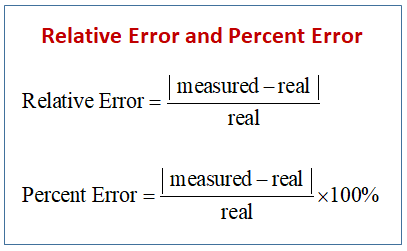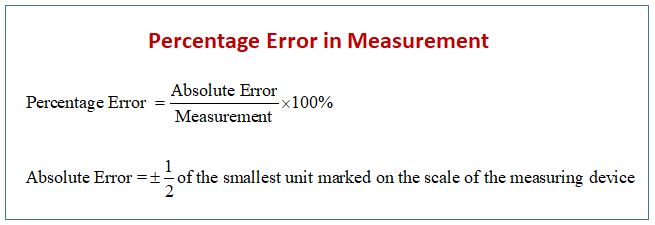Relative And Percent Error Formula
In these lessons, we look into Relative Error and Percent Error as required in the Regents Exam conducted by NYSED.
Related Pages
Percent Error
Percent Error Problems
Lessons for High School Regents Exam
Relative error is the amount of error your measurement contains when compared to the total measurement.
The following diagram shows the formula for relative error and percent error. Scroll down the page for more examples and solutions on using the relative error and percent error formula.

Relative Error And Percent Error
To calculate relative error, subtract the measured value by the real value and then divide the absolute of that number by the real value to get the relative error. We can then multiply by 100% to get the percent error.
Percent Error In Measurement
Percentage error is the absolute error divided by the measurement multiply by 100%.
The following diagram shows the formula for percentage error in measurement. Scroll down the page for more examples and solutions on using the percentage error formula.

The absolute error is an accuracy that is ±1/2 of the smallest unit marked on the scale of the measuring device.
Try the free Mathway calculator and
problem solver below to practice various math topics. Try the given examples, or type in your own
problem and check your answer with the step-by-step explanations.

We welcome your feedback, comments and questions about this site or page. Please submit your feedback or enquiries via our Feedback page.